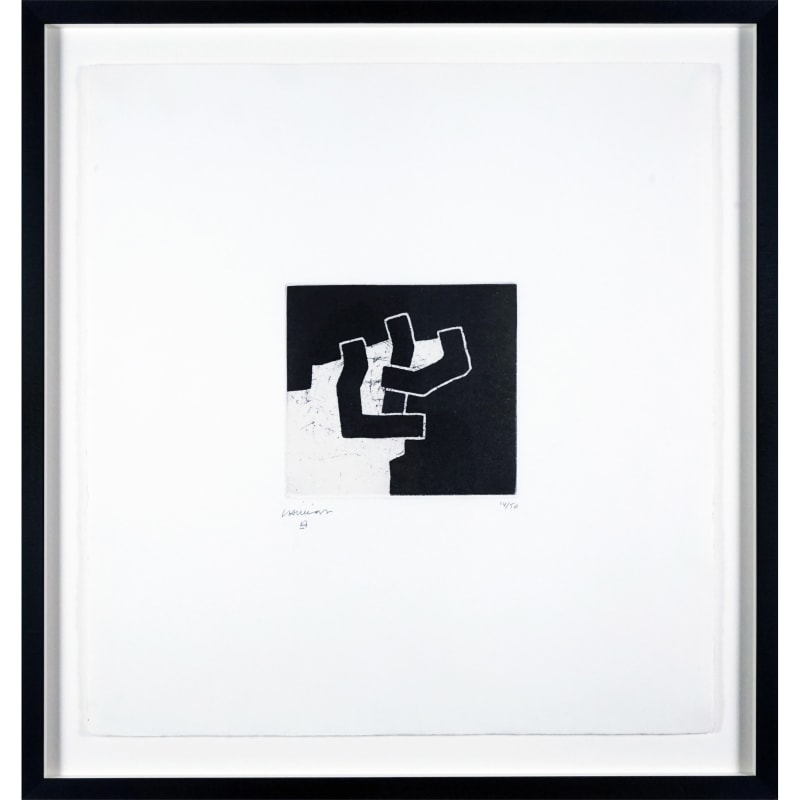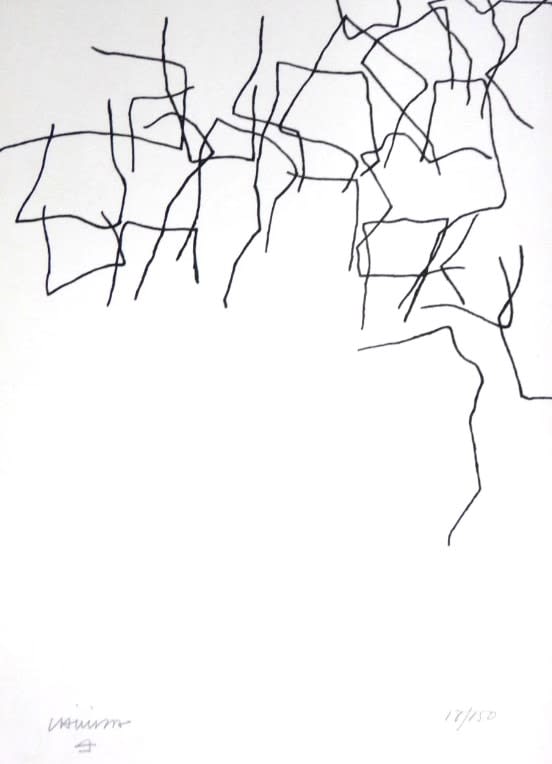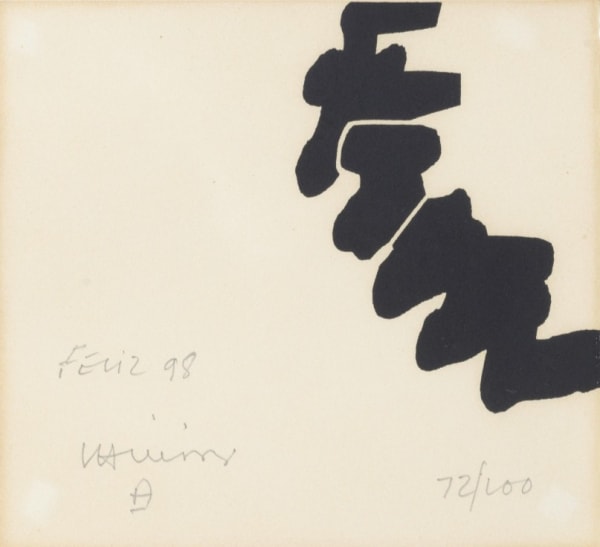Eduardo Chillida
"The qualities that one needs to be a good goalkeeper are exactly the same as to be a good sculptor. In both professions one should have a good relationship with time and space."
Acclaimed for his monumental sculptures in iron and stone, Chillida also produced a highly-regarded body of etchings, lithographs and woodcuts. They embody beautifully the physical, weighty quality of his sculptures while reflecting his lifelong fascination with form and line.
During his adolescence Chillida was the goalkeeper for Real Sociedad, the football team for his hometown San Sebastián. A promising career was cut short by a serious knee injury that required five operations to remedy. Following a different path, he left San Sebastián to study architecture at the University of Madrid in 1943. He soon abandoned his studies and moved to Paris where he began to experiment with the possibilities of sculpture.
Despite his use of a wide range of media, Chillida’s dedication to the pursuit of simplicity and balance ensured that the chosen material always remained true to its physical nature. His prints express the extraordinary possibilities of ink and paper; the almost sculptural indentation of a plate mark and the broad expanse of unprinted paper surrounding an image are qualities intrinsic to the process of printmaking, yet they slot perfectly into the wider spirit of Chillida's work. Consistently driven by the quality of space, density, and rhythm, his prints consider ways in which mass and volume contain space.
Chillida enjoyed great acclaim from early on in his career. He represented Spain at the Venice Biennale in 1958, winning the Grand International Sculpture Prize. He went on to win the Kandinsky Prize (1960); the Carnegie Prize for Sculpture (1964); the Andrew Mellon Prize shared with Willem de Kooning (1978); the Medalla de Oro al Mérito en las Bellas Artes from the Spanish Ministry of Culture (1981); the Grand Prix National des Beaux-Arts from the French government (1984); the Jack Goldhill Award from the Royal Academy of Arts in London (1996); and the Lifetime Achievement Award from the International Sculpture Center in Washington, D.C. (1997).
His prints are a stunning and highly coveted entry point to one of the 20th century's most unique and desirable artistic oeuvres. They enjoy a vibrant market and are an exceptional addition to any collection of modern and contemporary art.


![Eduardo Chillida, Aischylos: Die Perser [one plate], 1978](https://artlogic-res.cloudinary.com/w_600,c_limit,f_auto,fl_lossy,q_auto/artlogicstorage/hiddengallery/images/view/f1a8a7277cb1d0523a7b9d99b15d5f9ej/hiddengallery-eduardo-chillida-aischylos-die-perser-one-plate-1978.jpg)



![Eduardo Chillida, Aischylos: Die Perser [one plate], 1978](https://artlogic-res.cloudinary.com/w_600,c_limit,f_auto,fl_lossy,q_auto/artlogicstorage/hiddengallery/images/view/a2a2a56405add9aa2013e3684c2014c3j/hiddengallery-eduardo-chillida-aischylos-die-perser-one-plate-1978.jpg)

![Eduardo Chillida, Aischylos: Die Perser [one plate], 1978](https://artlogic-res.cloudinary.com/w_600,c_limit,f_auto,fl_lossy,q_auto/artlogicstorage/hiddengallery/images/view/cb4746fa702e9d8fd40347b4fe918d4ej/hiddengallery-eduardo-chillida-aischylos-die-perser-one-plate-1978.jpg)
![Eduardo Chillida, Aischylos: Die Perser [one plate], 1978](https://artlogic-res.cloudinary.com/w_600,c_limit,f_auto,fl_lossy,q_auto/artlogicstorage/hiddengallery/images/view/8d7b15f6ea236791bc28eaeb05bfc90aj/hiddengallery-eduardo-chillida-aischylos-die-perser-one-plate-1978.jpg)